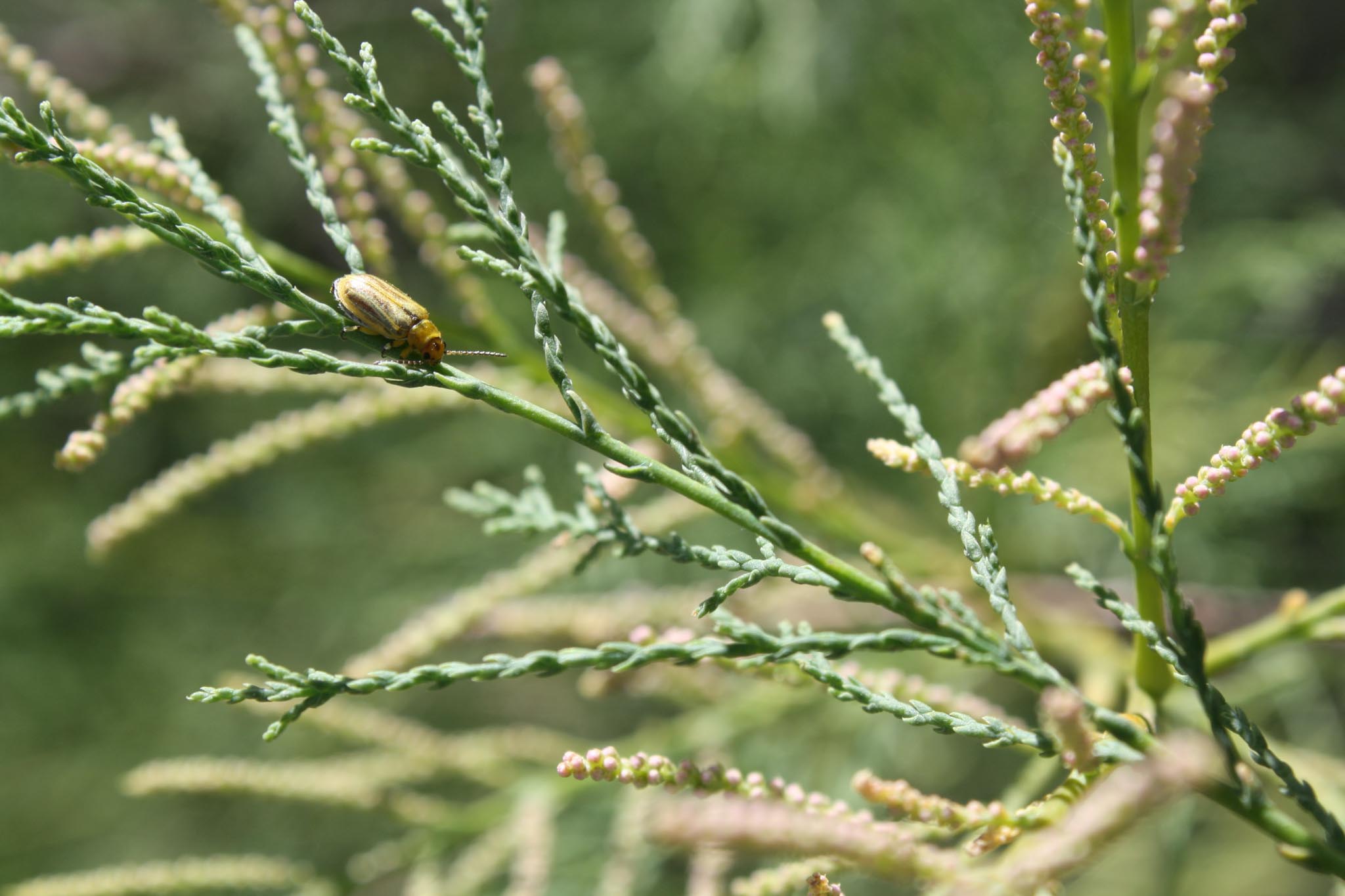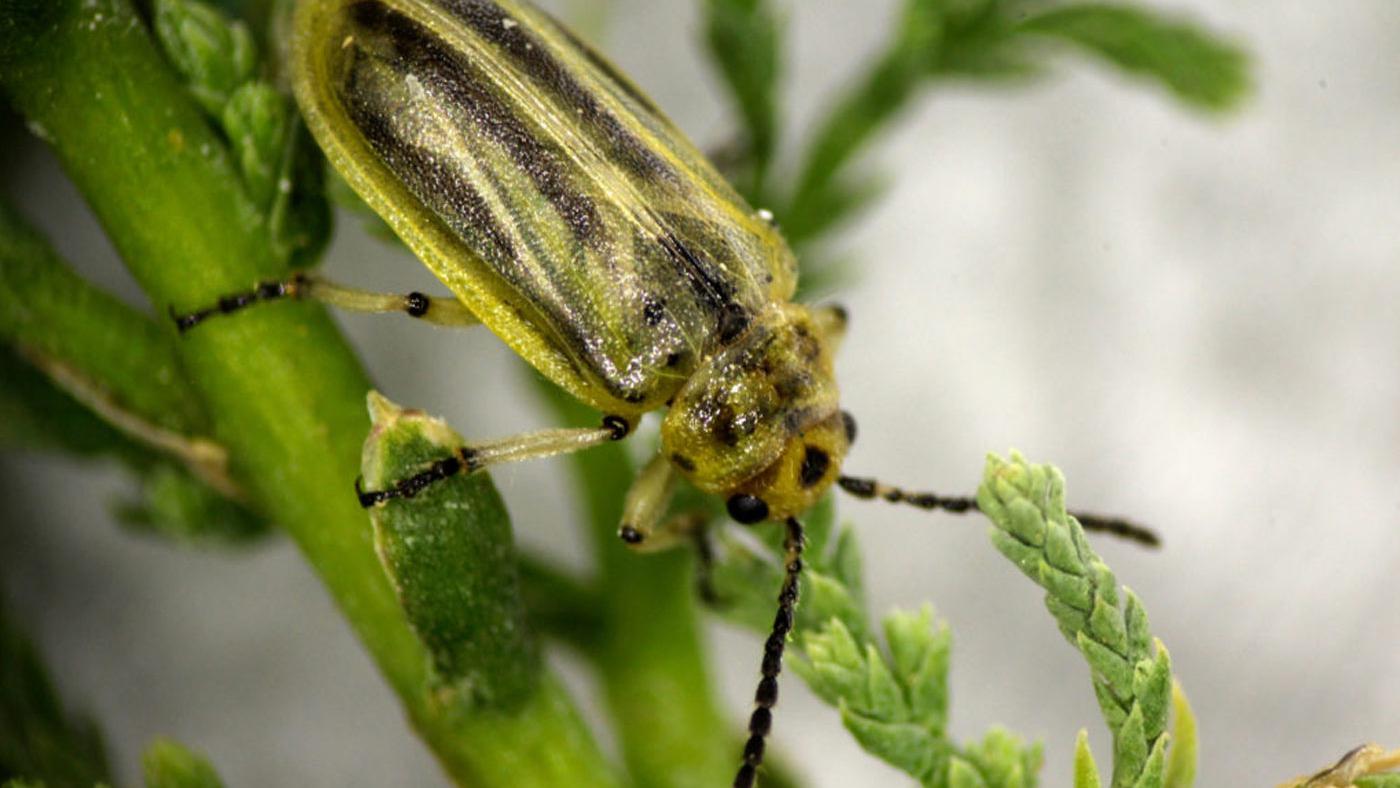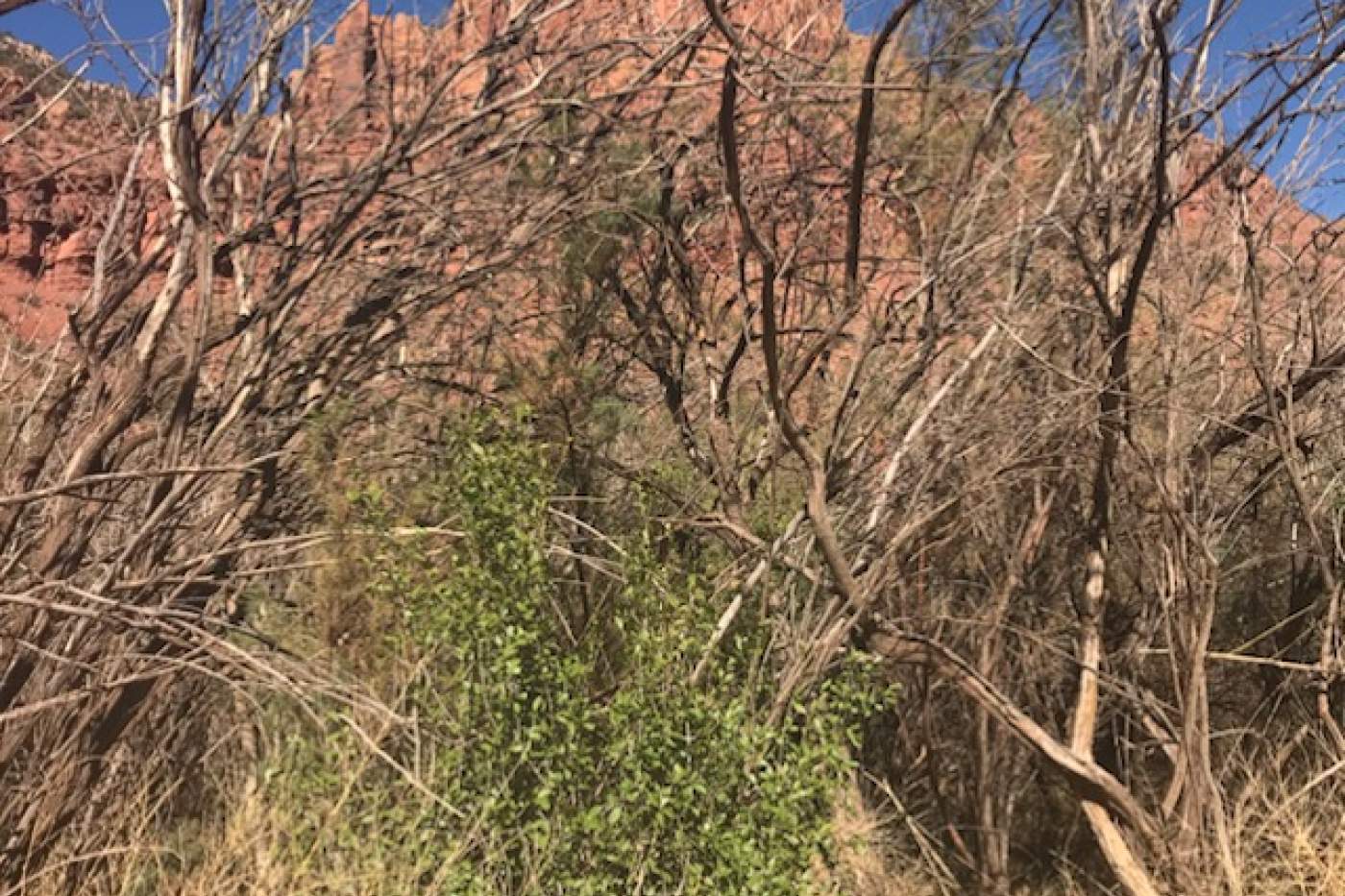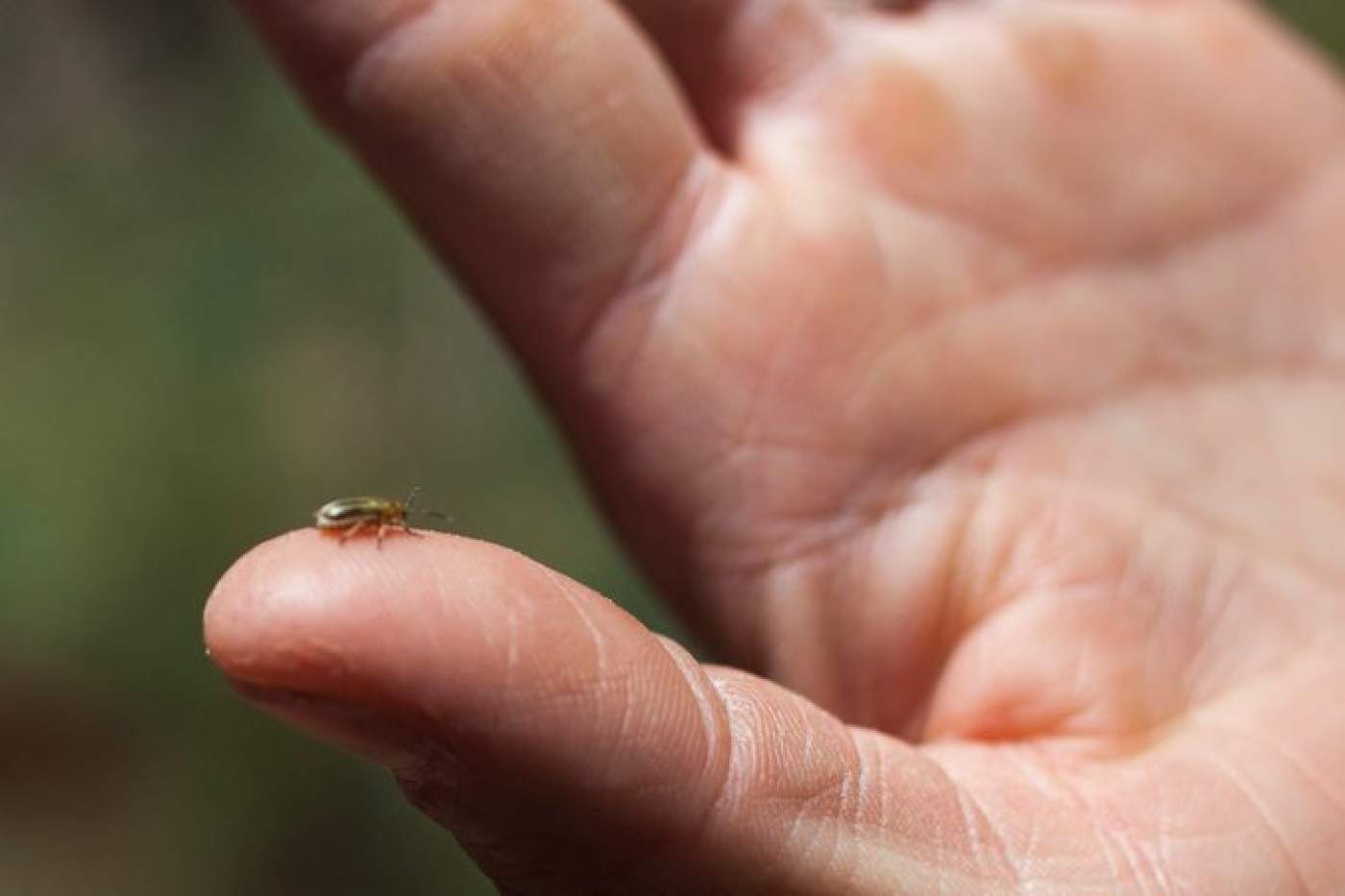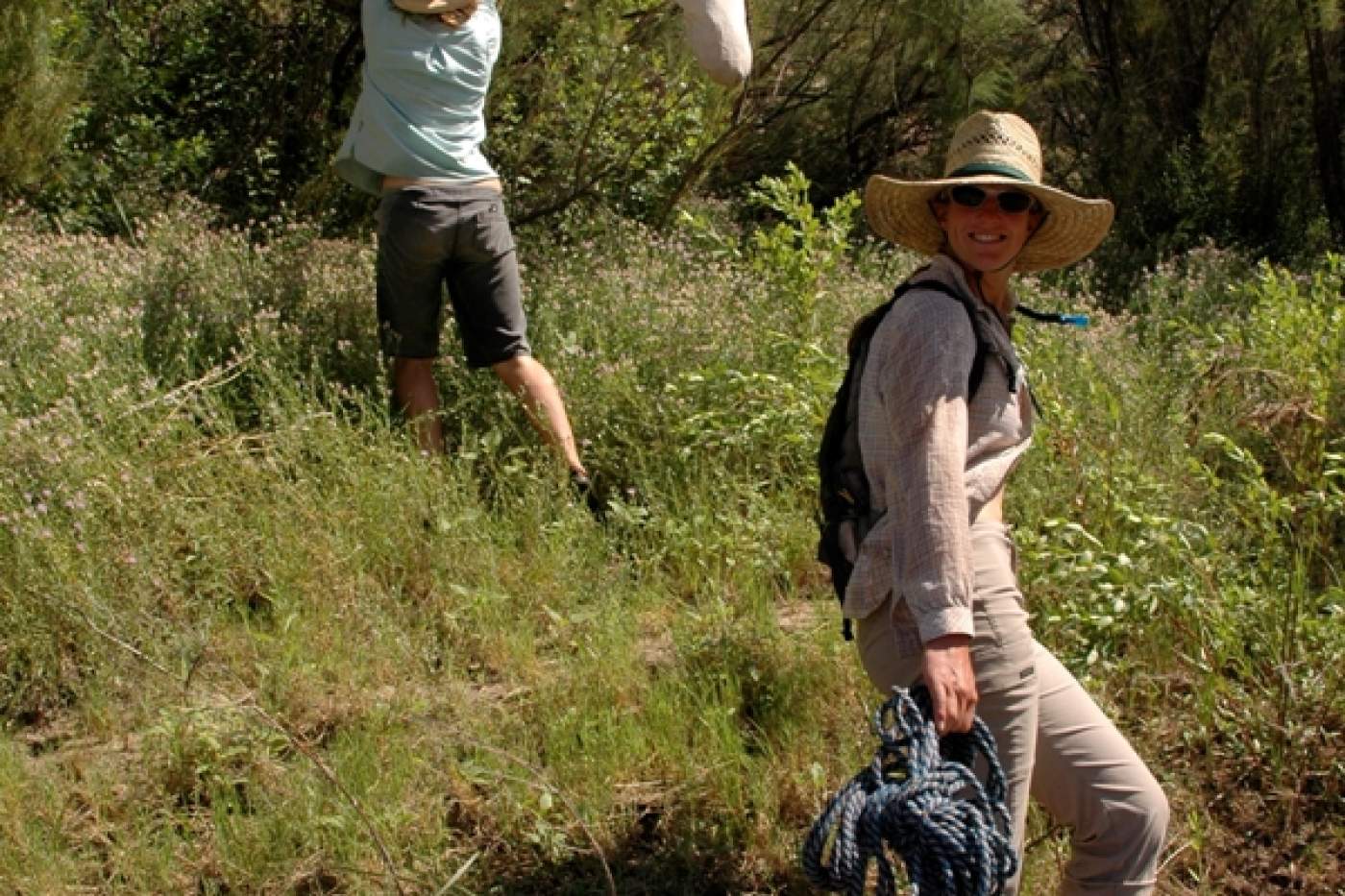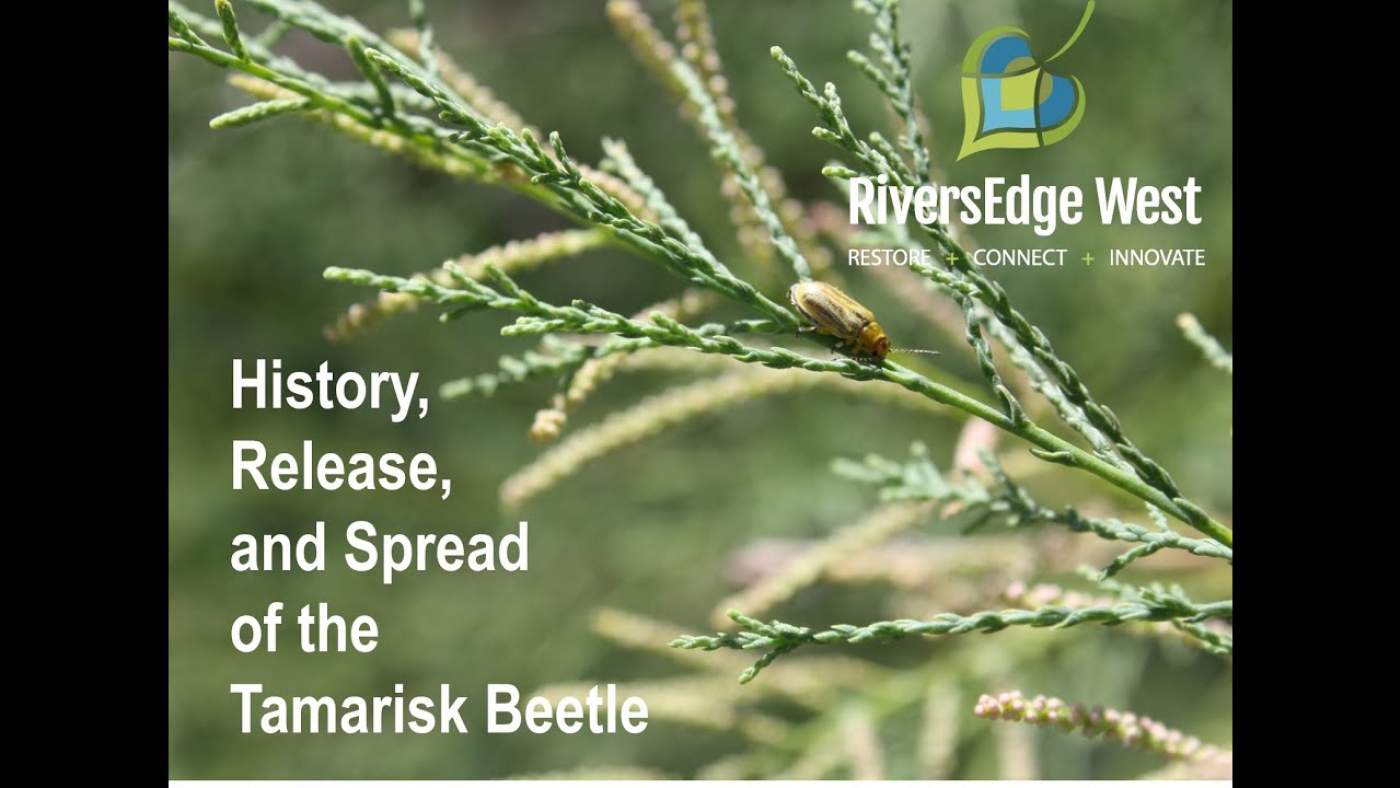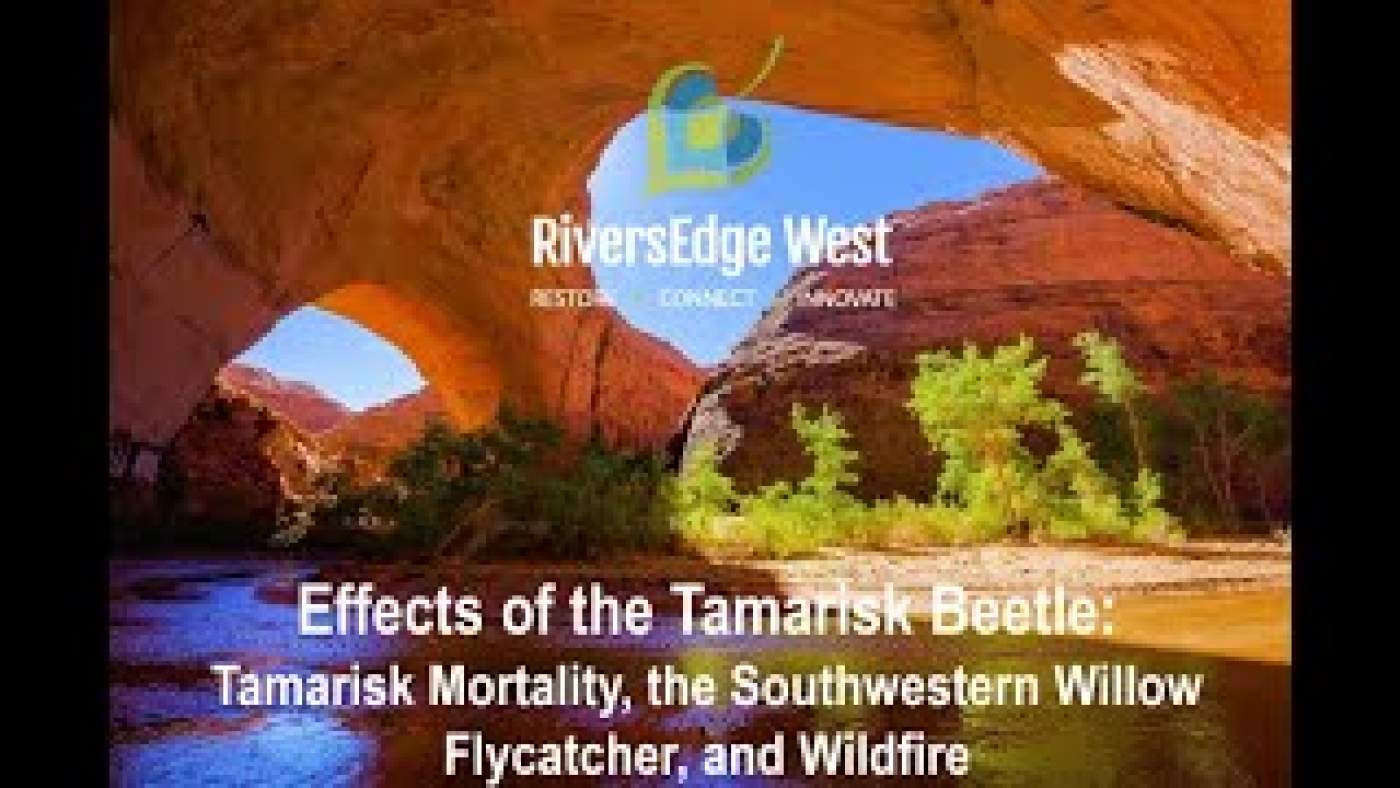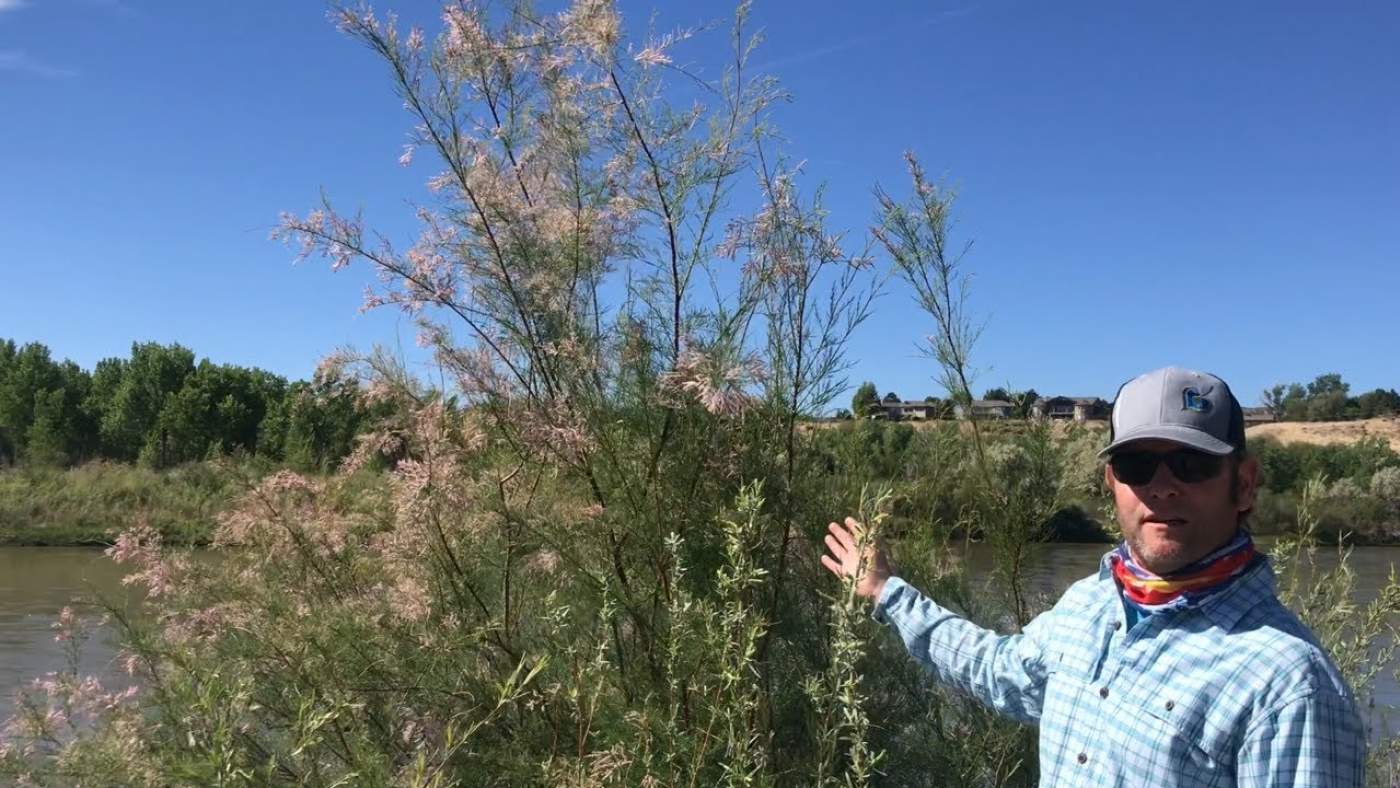What is the tamarisk beetle?
The tamarisk beetle (Diorhabda spp.) is a biological control agent introduced to target invasive tamarisk (Tamarix spp., also known as saltcedar). Biological control, or biocontrol, is an integrated pest management (IPM) method, where a highly specialized natural enemy is introduced to feed on the target invasive species. Biocontrol can be cost-effective and safe, but non-target effects must be monitored and mitigated.
Since beetles were introduced starting in 2001, they have established widely in the western US and provided much-needed control in some areas but have also been the source of management conflicts. RiversEdge West has been a leader in monitoring and sharing critical information about tamarisk beetles since 2007 by:
- Providing annual tamarisk beetle distribution maps and data
- Maintaining a resource library hosting the latest research
- Conducting presentations and workshops about tamarisk beetle impacts
- Collaborating in research to improve our understanding of risk and efficacy
Why and how was the tamarisk beetle introduced?
Mechanical removal and herbicides are commonly used to manage tamarisk but may not be appropriate due to landowner goals, site accessibility, size of tamarisk stands, expense, and other factors. To provide another method to control tamarisk, the U.S. Department of Agriculture initiated a search for a biocontrol agent starting in the 1970s. After decades of testing, they identified and released the tamarisk beetle in 2001.
Four species of tamarisk beetles were introduced from different parts of the native range of tamarisk for control in North America: Diorhabda carinulata from China and Kazakhstan, D. carinata from Uzbekistan, D. elongata from Greece, and D. sublineata from Tunisia. Adult tamarisk beetles are greenish to straw-colored with brown stripes running down the forewings covering its back. This beetle is roughly the same size as a ladybug, with a thinner body. Pinkish egg masses are laid near the ends of individual branches. The larvae are very small and appear completely black in the earliest stage; the second and third instar life-stages are characterized by a long yellow stripe running down either side of their abdomen.

Modified from a photo found in “Taxonomic revision and biogeography of the Tamarix-feeding Diorhabda elongata (Brullé, 1832) species group (Coleoptera: Chrysomelidae: Galerucinae: Galerucini) and analysis of their potential in biological control of Tamarisk”, by James L. Tracy & Thomas O. Robbins, published in Zootaxa, issue 2101, on 152 pp.; 11 May 2009.
How does the tamarisk beetle help control tamarisk?
Tamarisk beetles, especially as larvae, feed on the leaves of tamarisk, leaving them dry and brown. This feeding strategy is referred to as defoliation and can be seen on the trees as a rusty “browning” of the leaves (see pictures below for example).
Tamarisk beetles will not eliminate tamarisk. Defoliation by tamarisk beetles reduces the ability of tamarisk to photosynthesize, weakening the plant. Tamarisk beetles also help control the spread of tamarisk by reducing flowering and resprouting (reproductive capacity).
Adult beetles emerge in the spring, defoliate for 2 or more generations, then overwinter (known as diapause) in the leaf-litter as adults until the following spring. Where tamarisk beetles have adapted to the warmer, southern climates, they can defoliate tamarisk from March to October. If more generations of tamarisk beetles occur in an area, more defoliation and movement of tamarisk beetles can be expected. When beetles have eaten the tamarisk of an area, they will fly to nearby patches or die. In flight mill experiments, individual male beetles flew an average of 2.3 km during 1-hour trials.
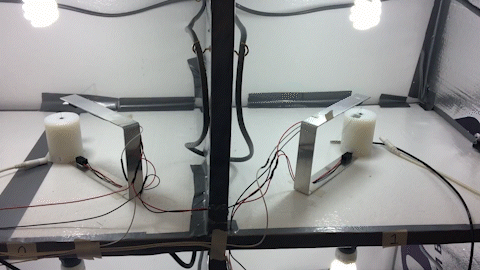
Where is the tamarisk beetle now?
RiversEdge West coordinates with partners to track the tamarisk beetles and creates an annual map to document tamarisk beetle presence and absence across the West. Populations of tamarisk beetles have now established in much of the available habitat throughout the southwestern United States, except for parts of southern Arizona. We have worked with over 70 partners since 2007, with documented observations now ranging from Chihuahua, Mexico to California, and up into Oregon, Idaho, Wyoming, and Kansas. Interact with almost 20 years of tamarisk beetle data here or below.
You, too, can contribute to monitoring the tamarisk beetle! Learn more about our tamarisk beetle monitoring program on our Tamarisk Beetle Data page.
What will take the place of the tamarisk?
As tamarisk is defoliated, canopy space opens, allowing other plants access to sunlight and increased productivity if conditions are suitable. However, weedy species can out-compete desired native vegetation, at least partially due to the altered soil conditions left by tamarisk.
Land managers are encouraged to monitor their respective river corridors that have been impacted by the tamarisk beetle to understand specific restoration needs in their area. For example, it may be important to treat secondary invasions and/or plant desired native species after tamarisk beetles have defoliated tamarisk.
How does defoliation affect wildfire risk?
Defoliation by tamarisk beetles ultimately reduces the risk and intensity of wildfires along tamarisk-infested corridors. After initial defoliation, there is a brief period of increased ignitability while the dead leaves are hanging on the trees, but this only lasts until the dead leaves are dropped (approximately within a month). Dead branches and the overall reduction in biomass of tamarisk after defoliation are less flammable than the original green vegetation.
How do tamarisk beetles affect wildlife in tamarisk?
Tamarisk-dominated ecosystems have been found to have lower biodiversity (in terms of studied arthropod, bird, and reptile species) compared to sites dominated by a mix of native and nonnative plants or only native plants.
Tamarisk beetles may assist in the long-term recovery and resiliency of riparian communities, but nontarget effects cannot be disregarded. Here we focus on wildlife, but other nontarget issues include standing dead biomass mitigation, bank destabilization, and restoration challenges. To help plan for both target and nontarget effects, RiversEdge West supports efforts to monitor and model the spread and impacts of the tamarisk beetle.
Research has shown that tamarisk beetle defoliation can have a negative effect on the endangered southwestern willow flycatcher (SWFL; Empidonax traillii extimus). Laboratory and field experiments prior to the introduction of tamarisk beetles predicted that they would not occupy SWFL habitat in the Lower Colorado Basin, but the beetles adapted to the conditions of those southern climates. Tamarisk defoliation during the flycatcher breeding season can expose nests and eggs to extreme heat exposure, parasitism, and predation. This was the subject of an important lawsuit, CENTER FOR BIOLOGICAL DIVERSITY v. TOM VILSACK, which ultimately ordered the U.S. Department of Agriculture to mitigate the negative effects of tamarisk defoliation by tamarisk beetles.
View the changing SWFL and Yellow-billed cuckoo habitat (Coccyzus americanus) in this map developed by James Hatten (USGS) in our Resource Center.
Can I move tamarisk beetles?
Due to unintended negative effects on the southwestern willow flycatcher (see above), moving the beetle across state lines without a permit is illegal and could result in large fines. Read the federal policy here from the US Department of Agriculture Animal Plant and Health Inspection Services (USDA-APHIS).
While moving tamarisk beetles within a state is not illegal, it is discouraged by APHIS. However, some land-managers move tamarisk beetles within their respective state boundaries to help control tamarisk. Tamarisk beetles are less likely to establish if they're moved from far away and not already adapted to the specific tamarisk and environment of the area.
Workshops and Training
REW hosts workshops to train land managers on how to collect and submit monitoring data and conducts outreach presentations to raise awareness of the tamarisk beetle issues and potential impacts. Each year more people are contributing to the dataset that indicates where the beetle is located. The impacts of this program are paying off as an increasing number of land managers are incorporating tamarisk beetle impacts into their riparian management plans.
To learn about upcoming workshops and training visit our event board.
For more information, view these helpful links:
- Scientific Publications and Resources in our Resource Library about the tamarisk beetle
- Southwestern Willow Flycatcher, and Wildfire - Webinar with Ben Bloodworth, RiversEdge West's previous Tamarisk Beetle Program Coordinator
- Previous Years' Tamarisk Beetle Maps
- Beetle vs. Bird: Expert Panel Weighs in on Biocontrol of Invasive Tamarisk Trees (an article recapping the Tamarisk Beetle Expert Panel that we hosted in January 2015)
- Success Stories | Department of Agriculture (colorado.gov) : The Colorado Department of Agriculture – Palisade Insectary’s website on the tamarisk beetle
- Palisade Insectary | Department of Agriculture (colorado.gov) - The Colorado Department of Agriculture – Palisade Insectary’s website on biocontrol agents
If you have questions about tamarisk beetles, please email tamariskbeetledata@riversedgewest.org.

